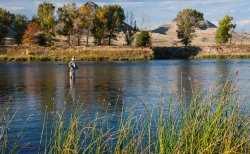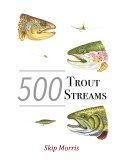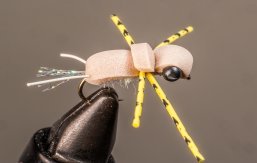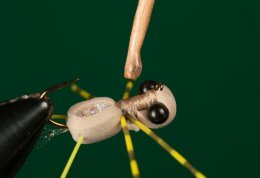Third Thursday Flies
10. Partridge and Orange
and
March Brown Spider
with Skip Morris
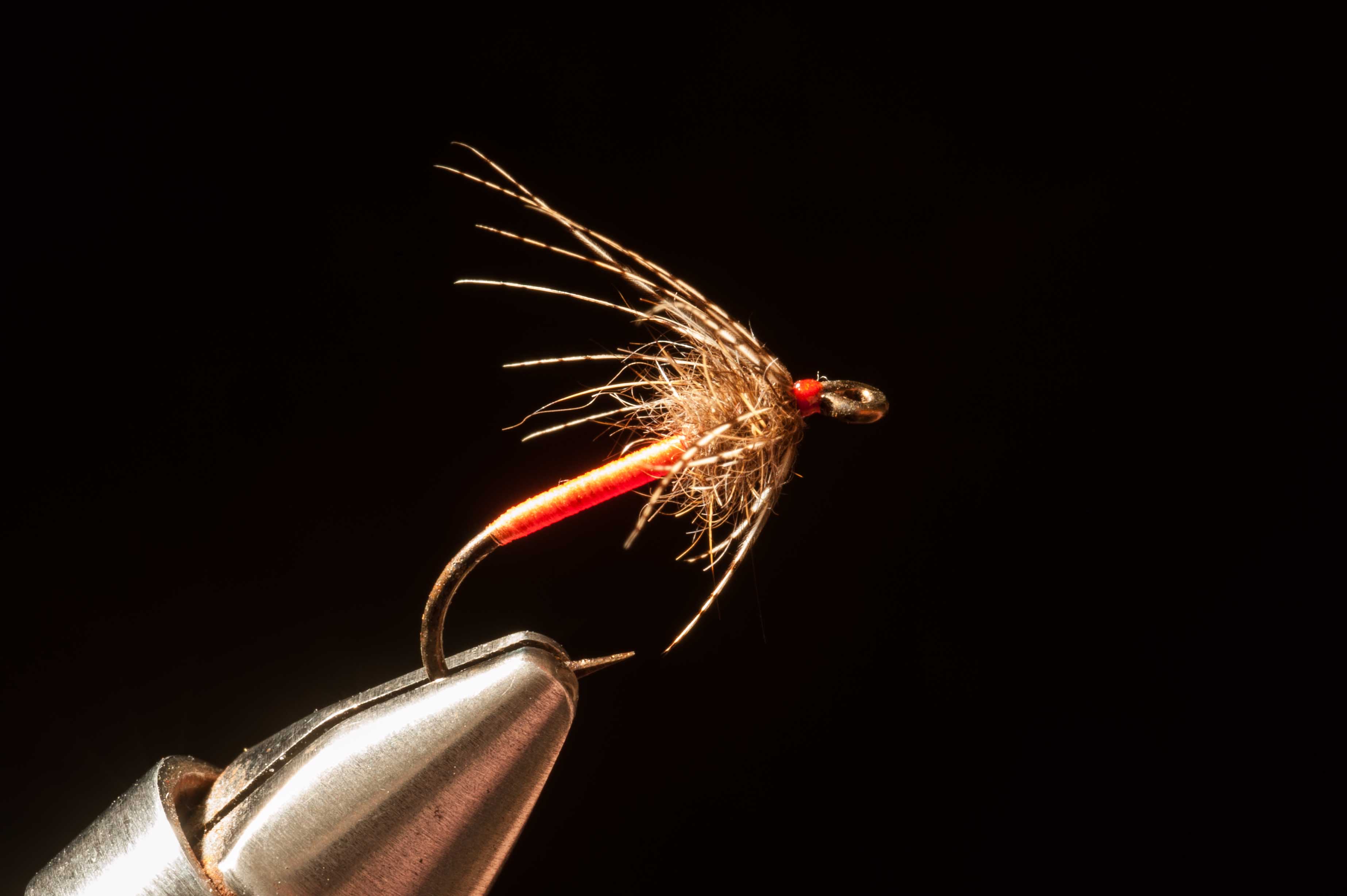 Partridge and Orange
Partridge and Orange
(Photo © Carol Ann Morris)
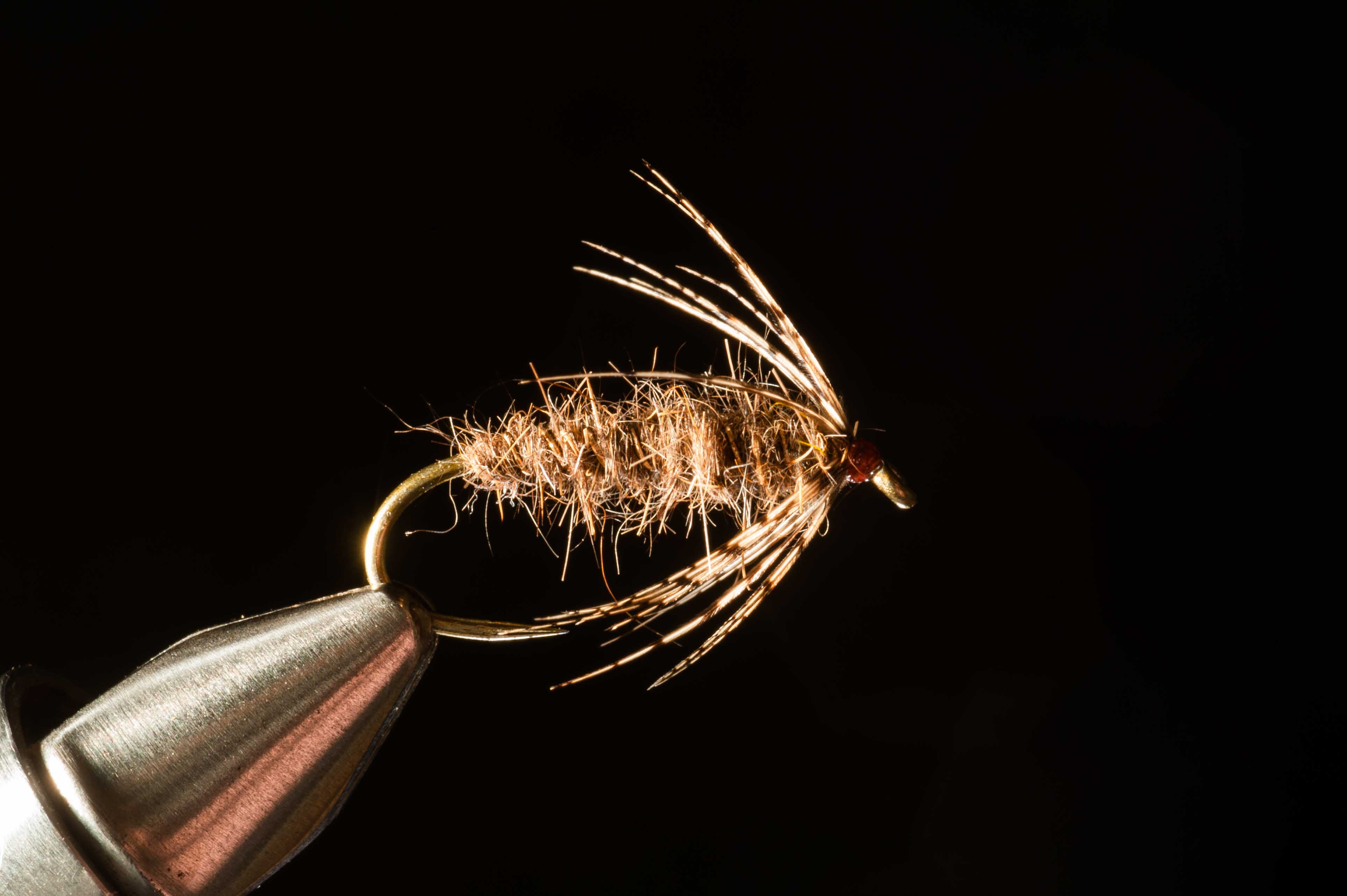 March Brown Spider
March Brown Spider
(Photo © Carol Ann Morris)
Trout flies come as nymphs, dry flies, emergers, and streamers, and these categories each comprise unimagineable numbers of patterns. The fly patterns within each category run a wild range. Compare the Fur Ant with the Chernobyl Ant, both dry flies, and what you'll see is a small, simple impression of a real wingless ant and, alongside it (if it's not the plain original but one of the newer distortions of the Chernobyl), a gaudy, leggy monstrosity composed of markings and mostly bright colors. Same goes for nymphs and streamers and emergers: variations in these flies more than abound. Not so, however, when it comes to soft-hackled flies; they pretty much conform: a slim to rarely stout body or abdomen, a supple cone of overlong fibers in front. (Yes, there may be a rib, the body may be of dubbing or floss or such, there may even be a tail, but from just a little distance the small diversity and powerful resemblance among soft-hackle patterns are plain.)
And there really aren't all that many soft-hackle patterns anyway. Or at least not in my considerable home fly-fishing library. That's probably because we fly fishers don't need many. If we have a bland-colored one, a green-bodied one, a yellow-bodied one, and an orange-bodied one, we're well positioned to cover nearly everything we need a soft-hackled fly to match. That is, we're well positioned so long as we have these flies through an effective range of hook size (like the range in the dressing that follows this essay).
Personally, I've fished the March Brown Spider far more often than any other soft-hackle—its loose blend of colors and glinting self suggest so many mayflies, caddis, and such that trout take it for a lot. But when the insect that needs soft-hackle matching is orange of body, the Partridge and Orange is just right—and it's a rung or two above the March Brown Spider in elegance.
The Spider is rough thing, its shaggy fur body a blend of somber hues (though the gold rib is a pleasing touch). The body of the Partridge and Orange is an abdomen of satiny orange floss, tapering lightly to a short, stout thorax of that same dubbing that makes up the whole body of the March Brown. Somehow, though, the sharp lines and glowing color of the slim floss part of the Partridge and Orange contrast with the woolly thorax in a handsome way. Or maybe that's only to my own eye—who can say definitively what flies outshine others?
There are today two standard hackle choices for these flies (for most soft-hackled flies). Which you choose will depend on your willingness to tackle fly-tying challenges and your pickiness as a fly fisher and tier—based on my experience, trout could not care less which hackle they see.
The traditional hackle for the Partridge and Orange is in that name: partridge. Same for the Spider. Specifically, partridge flank: those small, lightly curved feathers of the fine wavy barring from the neck and head of the bird's cured skin you purchase from your fly shop.
A common hackle now for a soft-hackle fly is "hen back," (or "hen saddle") yes, from the back of a female chicken. Any fly shop carries such skins.
The partridge is just a tad firmer of fiber than the hen, crisply speckled, carrying a quiet beauty. But a partridge hackle is a succession, from tip down, of ever-longer fibers—no stretch of fibers of equal length, none—and its stem, running down from its tip, thickens fast. Making a neat hackle-collar from a partridge hackle is far from impossible, but it's tricky.
The hen, on the other hand, is pretty easy: slim stem, a comfortably long stretch of fibers of one length, the exact qualities that help the tier make this feather into a neat collar. Not a lovely effect, particularly, but like the partridge, a natural one.
Almost everyone fishes soft-hackles by swinging them across stream. I did, but no longer do. I now fish them upstream, allowing the currents to play with their spidery fibers, to make these supple fibers undulate, sway. Wet-fly/soft-hackle master Davy Wotton convinced me to do so by phone, by email, and through his DVD "Wet Fly Ways." Glad he did: a soft-hackled fly presented upstream can be a ferocious trout catcher.
PARTRIDGE and ORANGE
HOOK: Traditionally a standard-length wet-fly hook, but I use a heavy wire nymph hook (so, 1X long). Sizes: 10 to 16 (maybe 18).
THREAD: Orange 8/0 or 6/0.
ABDOMEN: Orange floss.
THORAX: Hare's Mask or squirrel in hare's mask color.
HACKLE: Natural-brown) partridge.
MARCH BROWN SPIDER
HOOK: Traditionally a standard-length wet-fly hook, but I use a heavy wire nymph hook (so, 1X long). Sizes: 10 to 16 (maybe 18).
THREAD: Orange 8/0 or 6/0. (I don't know why the orange instead of logical tan or brown, except that it spruces up the fly to my eye. To a trout's eye? Seems unlikely.)
RIB: Oval gold tinsel.
BODY: Hare's mask or squirrel in hare's mask color.
HACKLE: Natural-brown partridge.
Click here to hear Skip's interviews on popular podcasts...
*Announcements*
Skip has an essay in Big Sky Journal's annual Fly Fishing issue, called "Montana Hoppers: the Princess and the Brute" released February 1, 2023. Skip rewrote it a bit; I painted and illustrated it here, on our website. Here's the link on our web page to check it out:
Click here to read Skip's essay Montana Hoppers: The Princess and the Brute...
Skip's latest books:
Top 12 Dry Flies for Trout Streams: How, When, and Where to Fish Them, is now available on Amazon as an ebook...check it out! Click on the links below to go to the information page on Top 12 Dry Flies (the link to Amazon is at the bottom of the page...)
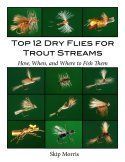 Top 12 Dry Flies for Trout Streams: How, When, and Where to Fish Them
Top 12 Dry Flies for Trout Streams: How, When, and Where to Fish Them
Click here to get more information about
Top 12 Dry Flies for Trout Streams: How, When, and Where to Fish Them (the link to Amazon is at the bottom of the page)...
Top 12 Dry Flies for Trout Streams: How, When, and Where to Fish Them (the link to Amazon is at the bottom of the page)...
Top 12 Nymphs for Trout Streams: How, When, and Where to Fish Them, 2nd Edition, originally published as an e-book only, is now available on Amazon as a paperback...check it out! Click on the links below to go to the information page on Top 12 Nymphs (the link to Amazon is at the bottom of the page...)
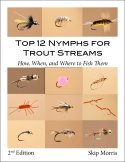 Top 12 Nymphs for Trout Streams: How, When, and Where to Fish Them (2nd Edition)
Top 12 Nymphs for Trout Streams: How, When, and Where to Fish Them (2nd Edition)
Click here to get more information about
Top 12 Nymphs for Trout Streams: How, When, and Where to Fish Them (2nd Edition). . .
Top 12 Nymphs for Trout Streams: How, When, and Where to Fish Them (2nd Edition). . .
Click here to get more information about Skip's e-book,
500 Trout Streams...
500 Trout Streams...
Skip's latest paperback book:
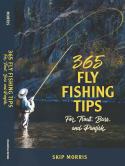 365 Fly Fishing Tips for Trout, Bass, and Panfish
365 Fly Fishing Tips for Trout, Bass, and Panfish
Click here to get more information about Skip's latest book,
365 Tips for Trout, Bass, and Panfish...
365 Tips for Trout, Bass, and Panfish...
Print Skip's chart for FREE:
Skip Morris's Trout-Fly Proportion Chart
Go to Skip Morris's Trout Fly Proportion Chart
Skip's Predator is available to buy...
Skip's ultra-popular Predator—a hit fly for bluegills and other panfishes and largemouth bass (also catches smallmouth bass and trout)—is being tied commercially by the Solitude Fly Company.
The Predator
CLICK HERE to learn more about or to purchase the Predator...
Learn to Tie Skip's Predator
Do you want to tie the Predator?
Tying the Predator
Skip shows you how to tie it on his YouTube Channel link, listed below:
CLICK HERE to see Skip's detailed video on how to tie the Predator...





